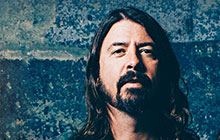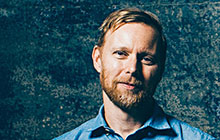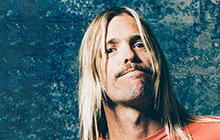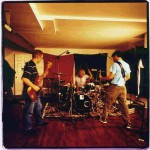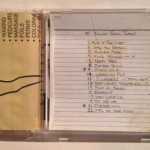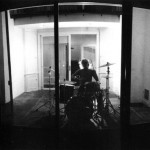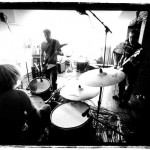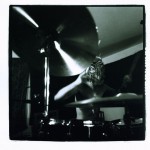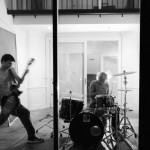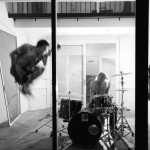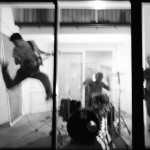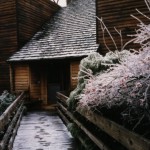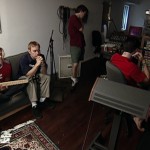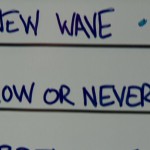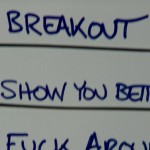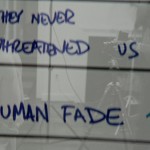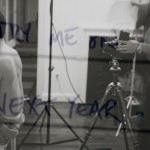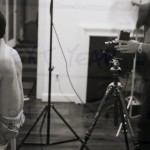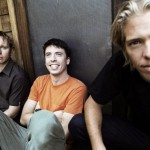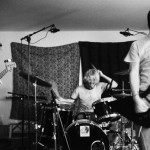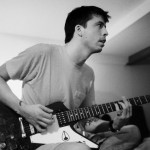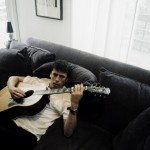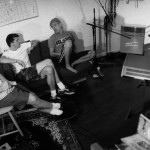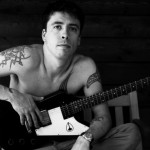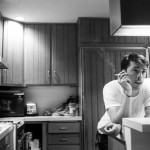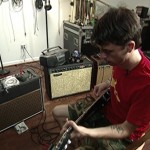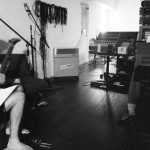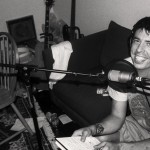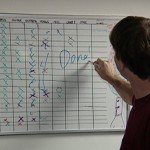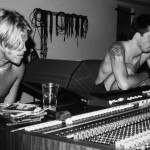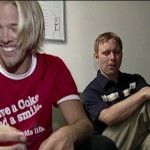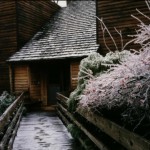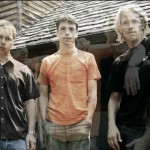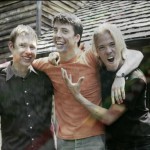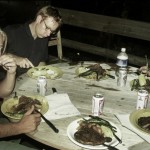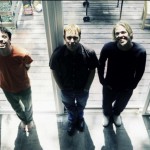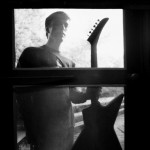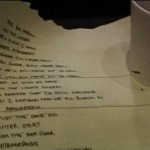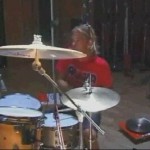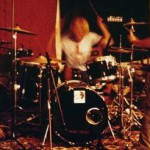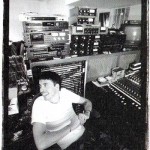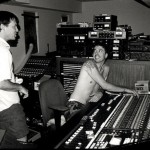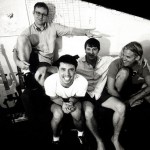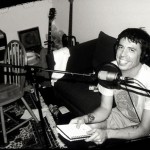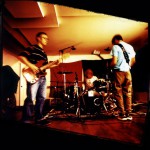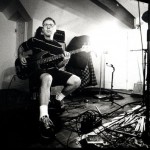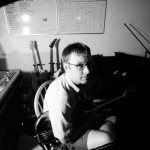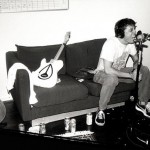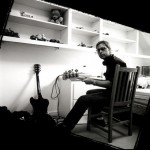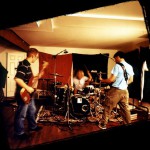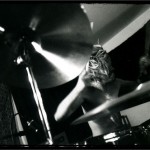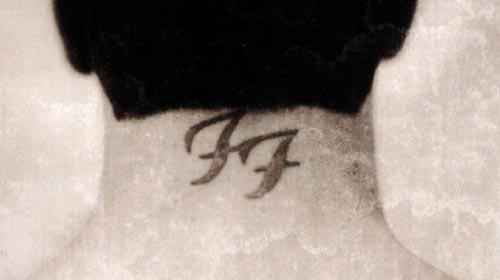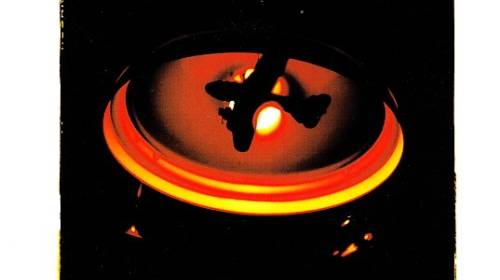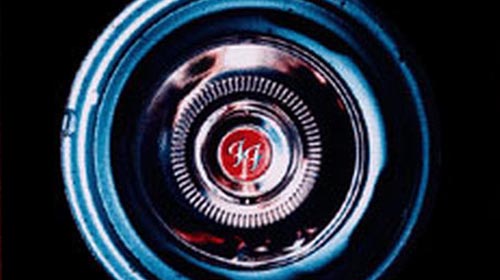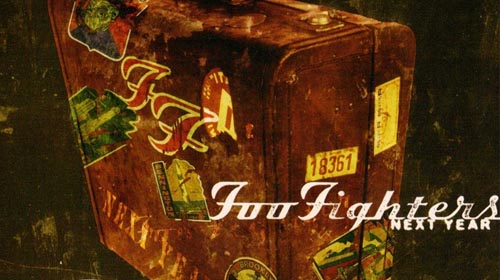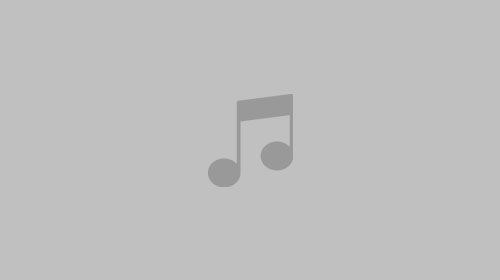Session Information
Foo Fighters spent the vast majority of 1998 on the road in support of their second album, ‘The Colour And The Shape’, culminating with a second appearance for the band at the Reading Festival in England. Since recording that album there had been significant changes - William Goldsmith and Pat Smear were out, Taylor Hawkins and Franz Stahl were in. Another change came in late 1998 when the band ended their distribution deal with Capitol Records. A clause in their contract allowed them to leave without penalty should the president of the company, Gary Gersh, ever leave Capitol. Gersh resigned from the company in June 1998, citing “philosophical differences”, and the band duly took the opportunity to exercise the release clause.
Rather than immediately tie themselves down to a new deal with another label just before they planned to record a new album the band decided to instead focus on the said album. The lack of a record label gave the band almost complete freedom to do what they liked with no pressures or commitments. the only higher authority was their very understanding management team, a scenario Dave Grohl enjoyed greatly - “We were left completely to our own devices.”
The band spent a large amount of their initial years on the road touring and as a result, many of the songs for ‘The Colour And The Shape’ were written whilst on tour, honed in soundchecks. This meant they went into the studio with many fully fleshed out songs but for their third record, that wasn’t the case. “We hadn't played any of these songs live. We hadn't even done many of them at sound checks,” Grohl said of the handful of songs he did have in place. “So, we went into a rehearsal space for about a month, coming up with ideas.
“That rehearsal location was Barco Rebar, a small independent space in Falls Church, Virginia. The band booked time at Barco in the fall of 1998 and began hashing out ideas but it didn’t take long for Dave Grohl to realize there were problems with the relatively new look Foo Fighters - in particular, the latest recruit Franz Stahl. “When we started rehearsing, we were in a tiny practice space, and in those few weeks it just seemed like the three of us were moving in one direction and Franz wasn't,” explained Grohl. “I think the problem with Franz is that he couldn't find his place within the three of us and... it just didn't work out. He was one of my oldest friends and we wanted it to work so badly, but it didn't.”
Grohl was forced to make the hard decision to fire Stahl, leaving Foo Fighters without a second guitarist for the third time in three years. Knowing how much a problem hiring another musician right before recording an album might’ve been the band elected to continue onwards as a three-piece, at least for the duration of the recording process.
The band spent three months at Barco Rebar in total, usually spending between 40 and 60 hours there each week according to owner Richard Gibson. Foo Fighters choice of rehearsal space in Virginia rather than somewhere more glamorous on the West Coast had coincided with Grohl now once again living in his home state, buying a house there to get away from what he called “The Hollywood element.”
In the spring of 1997 Dave Grohl was contacted by Verbena, an alt-rock band from Alabama who was at the time label mates at Capitol Record with Foo Fighters. The band wanted Grohl to produce their second record and despite admitting “I really don't know how to produce anything” he agreed, albeit with a stipulation – they also had to hire Adam Kasper to record it.
Grohl had first worked with Kasper during what turned out to be the final Nirvana recording session in January 1994. Three days were booked at the studio but for the first two days, Kurt Cobain failed to show up. “A lot of times we'd be waiting for Kurt [Cobain] to show up, so Dave would start doing these songs that ended up on his first album. We did about five or six of them,” explained Kasper. “He'd run out, do the drums, run out, do the bass, and we'd be done in half an hour. I was joking with him, saying, 'Man, you should do a solo thing with this stuff someday.”
In working with Verbena on the other side of the desk Dave Grohl was struck with an idea for his own future recording - “Verbena was given a budget to make their record that was just about enough to build their own studio, so I said to Adam, 'I'm going to build my own studio too!'“ he exclaimed.
Fast forward approximately one year and with his new home in Virginia Grohl decided to turn that idea into reality, hiring Kasper to help. The pair worked together building and fitting out the studio in the basement of his house, a process Grohl found to be easier than people may envisage - “That was so easy. People imagine recording studios to be these, you know, gymnasium-sized technical nightmares. But building one is the easiest thing in the world. All I did was soundproof, put in hardwood floors, get a bit of equipment and that was it, job done. There was no acoustic engineering, no science to it at all. Why would you want to spend thousands on a studio in Los Angeles that'll suck all the life out of your record? Christ! If I can do it, anyone can.” Grohl wasn't kidding. For soundproofing rather than use expensive material specifically made for the job, they used sleeping bags.
Costs couldn’t quite be cut in quite the same way when it came to kitting out the studio with recording equipment, although most of what they bought was not brand new, state of the art equipment. “My tastes are usually along the vintage analog type of gear,” said Kasper of his preferences. Not wanting to rush into any big decisions the pair spent several months touring different studios to find their perfect gear. Allen Sides’ personal custom API recording console was acquired from his Ocean Way Nashville studio and a vintage Neve console was also bought but when it came to the tape recorder itself, an exception to the vintage devices was made - “We bought a Studer tape machine as well - Dave wanted to be able to do a lot of quick punch-ins, so he bought a fairly nice new Studer. That was the only thing that wasn't vintage, but it's a killer machine,” Kasper explained.
In terms of outboard gear, UREI 1175LN Peak Limiter compressors were installed, along with a mixture of Manley and LA Audio tube amplifiers. A range of microphones were set up including Shure SM57s on the Amplifiers and Neumann u47 and u67 mics for vocals. Grohl was very complimentary of Kasper’s efforts in helping him build and kit out his studio, albeit in a backhanded, jovial manner - “He's a really, really super nice guy. It doesn't seem like he's working. It seems like he's lazy, like he doesn't want to work, but there's something that he does, in just setting up microphones and letting you go, that brings out the most in your music, and the sound of your instrument. He's really great.”
The trio of band members and Adam were all keen to record the album in an ‘old school’ manner, electing not to use any modern digital manipulation tools – they would instead record straight to old fashioned analog tape. “I didn't want to use any of the computer Pro-tooling or editing things that most people use because a lot of the time that will suck the life out of the song,” believed Grohl. “The more you manipulate it, the farther away you get from the core of the music.” This was in stark contrast to the perfectionist approach the band was asked to take for the previous album, where they would record take after take until it was just right. “This time we thought it would sound like a bigger record if we left the warts and all in it,” said Grohl.
The DIY recording studio was christened with the name ‘Studio 606’, a favorite number of Grohl’s that he would “see everywhere” and recording got underway in March of 1999.
As planned the band worked with no distractions or pressures of studio costs - “We told everybody to 'fuck off', built our own studio in my house in Virginia and took as much time as we wanted,” Grohl bluntly described the scenario. Despite the months spent at a rehearsal space the band had only come away with a handful of songs, and so much of the work had to be done on the fly. “[Writing in the studio] is something we would never dare to do had we been somewhere we had to pay for. Having a studio in your house gives you the freedom of changing things at the last minute and re-recording and lets you spend time arranging. It gives you much more freedom.”
Writing of the new songs began acoustically, just Grohl and his guitar. “I'd sit around with an acoustic guitar and come up with a melody, and then they'd wind up sounding like train wrecks,” he joked. Grohl would then take these basic ideas to Mendel and Hawkins to work them into more fully formed songs. “Okay, which way are we going to fuck this song up?” he would jokingly ask the pair. “We wanted to see how far away from our original notion we could get. The most obvious and natural thing for us to do would be to put down a distortion pedal, have the pedal off during the verses, click it on during the choruses, play a little bit faster, and really bash it out,” he recalled.
That approach had worked well on the previous record but this time the band wanted to experiment. Songs would be constructed that didn’t follow the standard quiet/loud/quiet dynamic as well as songs that used the same riff throughout rather than a chorus ‘hook’. “Tom Petty does it all the time, and it seems to work for him,” Grohl joked. “So maybe we would try to create a contrast between a verse and a chorus by adding another guitar that complements the riff that runs through the whole song.” Whilst their approach to instrumentation changed one thing remained the same – recording vocals was left until very last in the process. “I never sing the songs for the guys before we learn them, so they always begin as instrumentals. I can hear what I'm gonna sing in my head, but they have no idea – they're trusting me to be able to throw it together towards the end,” Grohl explained, going on to describe the exact process for recording - “Once we get a song together, Taylor and I will come up with a good drum arrangement. After we put the drums down, I'll put down a couple of rhythm guitars. After that, Nate records his bass, and I start doing a couple of guitar overdubs here and there.”
Thanks to the great chemistry between the trio this slightly unorthodox approach was not a problem. “Nate, Taylor and I have a wonderful relationship. I usually come up with a song and I don't have to tell Nate anything; Taylor and I have respect for one another because we're both drummers. I let him pull me in one direction because he's great at arranging music,” Grohl recalled. “He always takes a song from A to B because I think he's spent so many years listening to Queen! I usually just give suggestions.”
Grohl believed this to be one of the key reasons Franz Stahl had not worked out, unable to find his place with the other three members.
Nate was given almost complete freedom when it came time to record his parts to each song. The rest of the band would leave the room and without any direction, leave him to his own devices. Once finished, Mendel would casually head into the control room and simply declare “Okay, I’m done.”
Unlike the last record, Mendel could work without any pressure, knowing that the results did not have to be perfect. Despite Dave and Taylor usually working on songs away from Nate they were always impressed with how quickly the bassist could add the finishing touches once he got to work. “He is a genius. He can sit upstairs all day long while Taylor and I are mapping out a song, and then he'll come in and tie it all together.” Producer Adam Kasper was equally impressed with the work rate of Mendel – “The bass stuff is so non-standard, not root note kind of stuff; it's really cool parts, which you don't get with a lot of bass players.”
A Vox AC30 was used for guitar amplification for most of the session as well as a Fender Twin Reverb, a Marshall JCM 900 and a Mesa Boogie Maverick. Shure SM57s were used to mic the amplifiers, a slightly unorthodox choice for work in the studio but with the band having used them extensively during live performances and enjoyed the results, it was decided they would also suffice in the studio.
In comparison to the almost military approach to recording guitar tracks for ‘The Colour And The Shape’, Grohl and producer Kasper stuck to the mantra of simple, and real. The human element. Spending just ten minutes getting a good tone, it was simply a case of throwing a mic up against the amplifier and playing. “Adam is so good and quick that he doesn't need to do any measuring, calculating, or science – he can just hear it” enthused Grohl about his producers’ natural abilities. In the past, Kasper had worked with producers who’d spent three days getting a rhythm guitar sound, a scenario Grohl said would make him “Go postal.”
“We'd do a take and walk away, bump into the mic, turn the amp off, bump into the knobs, come back to finish the guitar track, and not even really worry about it.” Many of the songs they’d record would start with a guitar riff that had a rattling sound in the background, a noise they attributed to the Vox amplifier. “We kept promising we'd replace the tube, but we never did. And now I like that sound a lot,” explained Grohl.
A variety of guitars were used by Grohl during the session including his treasured red Gibson Trini Lopez, a Gibson Explorer, and a Fender Telecaster. Rather than bundle on lots of effects and use several distortion pedals as he’d done for the last album Grohl elected to keep things simpler resulting in a “cleaner, fatter, more natural overdrive” tone.
“Sometimes we'd double a track using an old Pro Co Rat, and then hard-pan the parts so that a super-distorted guitar was in the left channel and a grindy guitar was in the right. Then we'd sprinkle in lots of clean guitar overdubs. So rather than play through a distortion pedal and an amp with its volume at 5, we wouldn't use a pedal at all. We cranked up the amp to 10 so that it sounded like the speakers were screwed up. I enjoy the sound of a guitar breaking up because the speaker is getting its ass kicked” he explained.
Grohl recorded all his guitar tracks sat in the DIY control room of the studio, rather than in the ‘live’ room out by the amps. The reasoning being that he and Kasper could then work together to get the right sounds, able to hear what was really being committed to tape.
Most of the songs recorded used regular guitar tuning but for the song ‘Stacked Actors’ Dave experimented by tuning the low-E string down to A. Whilst ‘Headwires’ and ‘MIA’ were in a conventional drop D tuning for the latter the B-string was additionally tuned down to A. ‘Stacked Actors’ didn’t actually began life as a Foo Fighters song, or rather was not written with the band in mind. Earlier in the year, Grohl had been approached to write a song for Ozzy Osbourne, potentially to be used by the Black Sabbath frontman on his next solo album. “I came up with the riff when I was asked to write some songs for Ozzy six or eight months ago” Grohl explained. “I was trying to come up with riffs that I thought would sound cool – Ozzy circa his ‘Crazy Train’ era – and I was just fooling around when I tuned the E down to A.” The song was ultimately not used by Ozzy and enjoying the “sludge-heavy” guitar sound he elected to keep the riff for himself.
Like many songs the guitar tracks for ‘Breakout’ were recorded using his Trini Lopez, a guitar he described as “the world’s most beautiful” which “sounds wonderful clean and wonderful dirty.” The guitar ran through an Electro-Harmonix Memory Man Pedal and the AC30 amp. That combination was also implemented for the song ‘Next Year’, albeit with the treble on the amp boosted and volume kept low for a cleaner sound which Grohl described as the “Classic sound of the Trini Lopez – clean with just a slight touch of distortion.” For 'Headwires' the main riff and harmonics were played with a Gibson Explorer through the same Memory Man/Vox AC30 setup. On the choruses, however, Grohl switched to a Gretsch Duo Jet and Pro-Co RAT effects pedal and for the “high, picking part in the middle eight” a Gibson SG was used, again with the Memory Man and AC30.
For the song 'Generator' Grohl used a Talk Box, a vocal effects unit that can shape the sound of the guitar, controlled by the mouth. It was made famous by Peter Frampton in the 1970s with the track 'Show Me The Way' and also used by artists such as Joe Walsh, Aerosmith and Bon Jovi. Owing to the origins of the device the song was given an early working title of ‘Show You Better’ before lyrics were written. Whilst the talkbox featured most prominently during that track it was also used during the bridge section of the song ‘Breakout’, in a much more subtle manner.
To achieve the correct tone for the laid back, mellow track ‘Ain’t It The Life’ Grohl used a Gretsch Duo-Jet equipped with a whammy bar, something he’d never previously used. “That's the first time I've ever used one of those in my life” he recalled. “I never knew what to do with it, but that song just seemed like it had to have it.” Whilst writing and constructing the song drummer Hawkins would tell Grohl it was going be great as he believed it sounded like a song by The Eagles, something he was not overly keen on - “Fuck it! I hate the Eagles!” Grohl exclaimed in response. To record the lead guitar part of the song two different guitars were utilized, the slide on a Fender Telecaster for the first section and then an acoustic guitar for the last section. By the time they’d finished recording Grohl likened it more to a Jimmy Buffet song rather than an Eagles one and whilst they thought the end result was a little cliché, they also believed “it worked”.
Drumming duties during recording were split between Dave Grohl and Taylor Hawkins but only once Grohl had convinced Hawkins of his abilities and assured him he wanted him on the record. “I think it was important to him that I played some of the drums on that record because I was having a hard time in the studio” recalled Hawkins. “It was when I was still messing around with drugs and I remember just wanting Dave to play the drums on everything. And he wouldn't allow it. He really pushed me and pushed me to finish it and do the work. It's good that he did that because it really gave me confidence in the end. I was really lacking experience at that time, and I had no confidence being 'Dave's drummer',” he added.
With Hawkins clear on what Grohl expected of him, the pair agreed on who was doing what beforehand, wanting to avoid any repeat of the situation which led to original drummer William Goldsmith leaving the band. “We assigned songs to each other so that there wouldn’t be any weirdness. Like, 'Hey, why don’t you play on this,' 'Okay, well, why don’t you play on this?'“ Grohl played on “four or five” songs, leaving the rest to Hawkins. “There were just some things that Taylor does better than me and some things I do better than Taylor and we sort of met in the middle,” said Grohl of the choices.
For the most part, Taylor and Dave played the drum tracks on an old Gretsch kit with a Drum Workshop kit also used for some songs. The snare drum on both kits was constantly being switched out depending on the song, including using some that were previously owned by Soundgarden drummer Matt Cameron.
“Dave had a few different ones too, and we would just change things up depending on the song. We'd mix it up as much as we could and recorded it with a lot of tube mics and compression here and there, to taste,” explained producer Kasper. “Dave's room wasn't huge, but it was big enough to get a pretty roomy sound. I would place the room mics fairly close and low to the drums, and I used old tube mics and would compress those. If I wanted a roomier sound, I would use more compression” he added.
Despite many inquiring minds, the drumming duo has kept complete details of who did what a well-guarded secret, although some are known. ‘Learn To Fly’ is known to have been completed by Grohl, whilst Hawkins has mentioned he played on many of the softer songs - “Basically the more mellow or mid-tempo ones I played really well. I almost felt like handing Dave all the faster and crazier songs, and I wanted to do the jazzier, freakier ones,” he explained. “I feel like I added some things, like on the song 'Aurora', which is totally me. It wouldn't have been like that if Dave played it. But I also listen to this record and hear things that I played that I feel were a little sloppy”. ‘MIA’ was also confirmed to be the work of Hawkins and whilst fans with a good ear have long speculated on the other tracks, none have been officially attributed to either drummer.
Once a song was complete only then would attention turn to the vocals. Rather than construct a typical vocal isolation booth, all the vocals were recorded sitting on Grohl’s couch. A few different microphones and effects were experimented with, but as with the instrumentation recording, everything was kept natural and simple. Grohl would double and even triple his vocals as he’d almost always done to date, but other than that no special effects were used.
The microphones used were Neumann's, u67 and u47 tube type mics, with Dave and Adam deciding which songs needed which treatment. “Usually I will get the track up in the headphones for myself and I'll sing something and make some noises to get the sound I think will work with the track, depending on if it's really bright or warm or compressed or not. Sometimes I'll put the effects right on it, which is what I did with some Soundgarden stuff,” Kasper recalled. “We went right into an Echoplex and put it to the track that way, so when you're singing it, it is kind of close to what it will be. In this case, Dave would sing a take, listen to it and realize, 'oh, we need to make it thinner,' or 'We need more distortion,' and we'd tweak it like that. We'd go through and double things where they needed to be and stuff like that,” he added.
With the vocals completed for a song a few overdubs sometimes followed and a full song would usually be completed within a day or two. With recording taking place over four months, songs would continually be re-explored days or weeks after the initial recording - “We would record a song and think, 'Wow! That's kind of cool!'. Then, a month later, we would think, 'Let's take another stab at it; I wanna change this one part,' and do it again. Or, we'd go in to mix it and think, 'You know what? Let's just record this one more time' and then spend another day and a half re-recording and mixing it,” said Grohl of the iterative process.
Over approximately four months around twenty songs were recorded by the band. Ten of those would be included on their third album, ‘There Is Nothing Left To Lose’.
Two cover songs recorded towards the end of the session, Pink Floyd’s ‘Have A Cigar’ and ‘Iron & Stone’ by The Obsessed were released as B-Sides to singles from the album. The original song ‘Fraternity’ was also relegated to B-Side status, although it was included with the album in some regions.
The remaining songs were in various stages of completion and not released in any manner. A track with the descriptive working title ‘New Wave’ had only drums and bass recorded before the band moved on whilst the song Grohl had raved about to the press before recording, ‘Fuck Around’, was fully recorded including vocals but was not deemed good enough to release. The same was true of ‘7 Corners’ and both songs would be worked on at several further recording sessions in the future. A track with the title ‘Oh Yeah’ was abandoned even quicker than ‘New Wave’, with only a solitary guitar track being recorded.
One further song recorded during the session but ultimately abandoned was an early version of the song ‘Virginia Moon’, later released on the 2005 album ‘In Your Honor’. It had a different working title at this stage but the song was still a soft, acoustic-styled song. Despite the overall feel of the record being more mellow than the previous one, Grohl still felt the song just wouldn’t have worked on this album. “Something like that just didn’t make any sense in the middle of a rock record,” he believed. “We did one version where we tried to turn it into 'Everlong' but it didn't fucking work.”
Recording wound up in Virginia in late June and whilst rough mixes were worked on at the house it was decided final mixing should be done in a professional studio. The band packed up their gear, grabbed the master tapes and headed back to Los Angeles.
